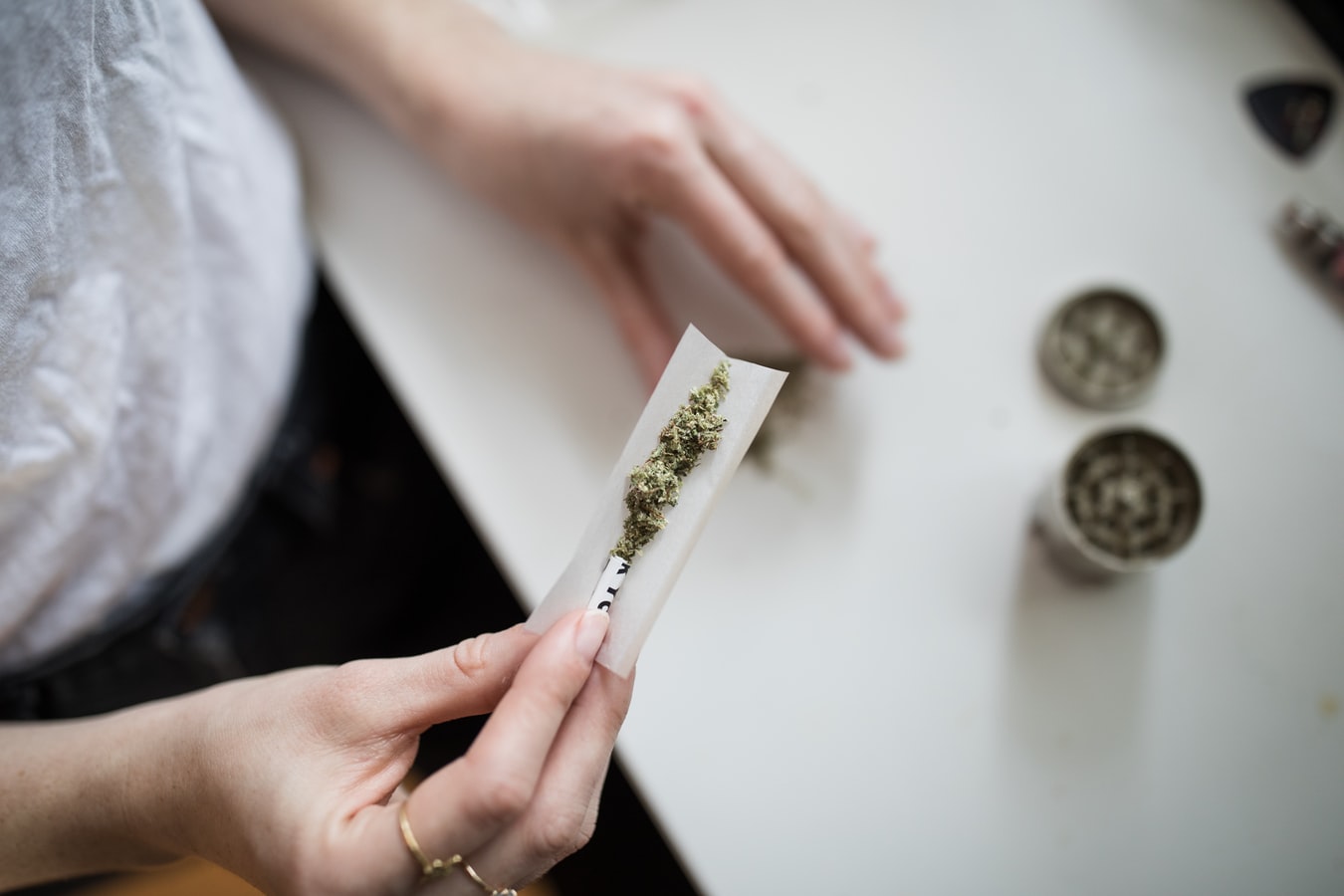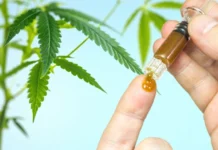It’s easy for cannabis users to dismiss the potential health risks of smoking. In comparison to tobacco, cannabis seems virtually therapeutic. In fact, cannabis has traditionally had medicinal uses. It was even used as a treatment for asthma in the 1800s! Add to this the recent explosion in the use of cannabidiol (CBD) to help treat conditions ranging from anxiety to rheumatoid arthritis, and you might feel justified in thinking there’s nothing to fear.
But here comes the bad news: smoking is still combustion. This means that even smoking cannabis still generates a whole host of nasty byproducts and carcinogens, like carbon monoxide and tar. In general, smoking weed has not demonstrated the same respiratory side effects that come with smoking tobacco. Still, many users report irritation and discomfort, and some studies have pointed out a link between increased airway resistance and habitual cannabis use. Unfortunately, the prohibition of the plant has limited scientific data regarding the effects of long-term exposure.
While science does its thing, it’s still better to be safe than sorry! Here are some of the healthiest ways to smoke weed:
1. Use A Filter
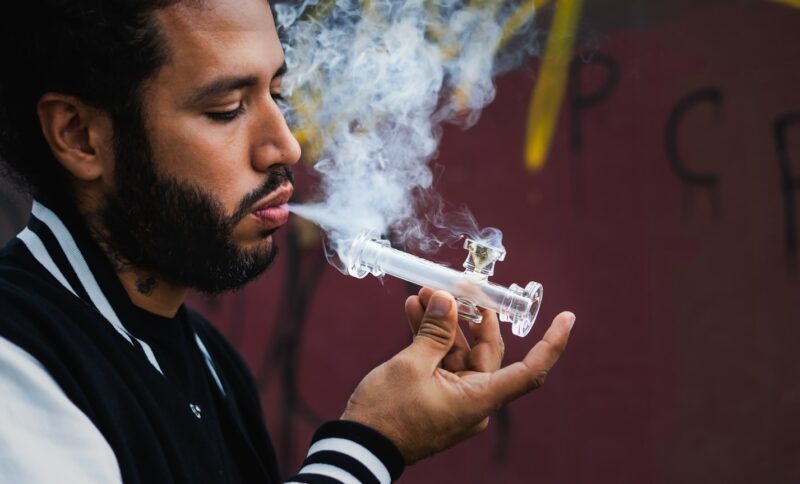
One of the most obvious ways to get rid of all of the byproducts of smoking but is to filter them out. When using a pipe or bong, a Mooselabs MouthPeace will trap the nasty bits, helping you to enjoy a cleaner, healthier smoke. Plus, in these uncertain times, having you own mouthpiece will dramatically reduce the risk of germ transmission during a smoke sesh with friends.
2. Glass Pipes and Water Pipes
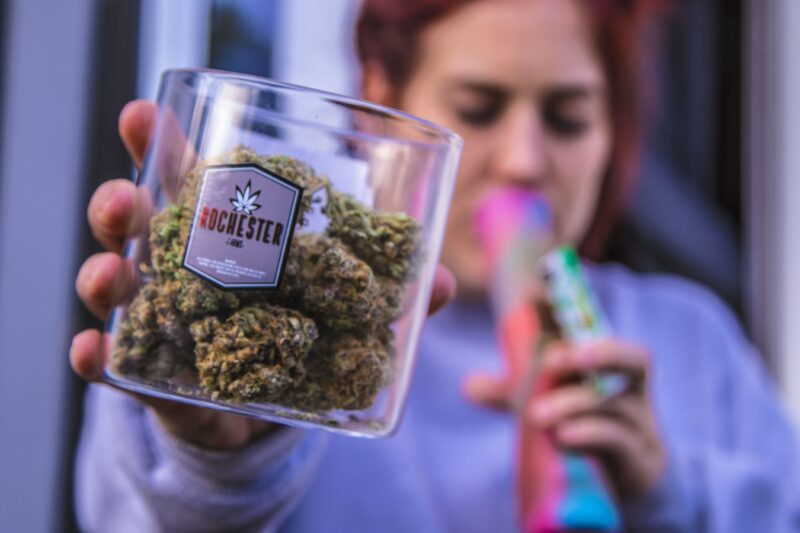
From a health standpoint, smoking from a glass piece is far superior to rolling a joint or a blunt. Not only can they easily be used with a filter, they also contain none of the risky materials found in most rolling papers—not to mention highly toxic blunt wrappers! Using organic, FDA-approved additive-free wrappers can mitigate the risks if you prefer smoking joints, but not completely. Cleaning your equipment regularly will also reduce the amount of harmful particulates that find their way into your lungs.
Water pipes or bongs have an added benefit over simple glass pipes in that they filter the smoke through water as well. While this does leave behind some of the active components of your smoke, it also leaves behind plenty of toxins. Plus, it cools the smoke, making inhaling more comfortable. For an even smoother rip, try adding ice cubes to your bong along with water!
3. Vaporizer

A relatively new technology, vaporizers come with their own host of health risks. Tetrahydrocannabinol (THC) vaping concentrates often contain the potentially harmful vitamin E acetate. Vaping flower, in contrast, eliminates this risk, though the practice is quite new and has not been studied in detail.
Whereas smoking involves burning the plant and inhaling ash and a bunch of other particulates along with marijuana’s active compounds, vaporizers heat up the bud just enough to release its THC and terpenes, the compounds responsible for the plant’s characteristic flavor and aroma. Less heat means less harmful substances entering your lungs. Some users still report irritation from vaping bud, but the practice appears to be a healthy alternative to smoking. Also, using vaporizers is not suitable for beginners, as it releases more active compounds and can be potentially too strong for some users.
4. Edibles
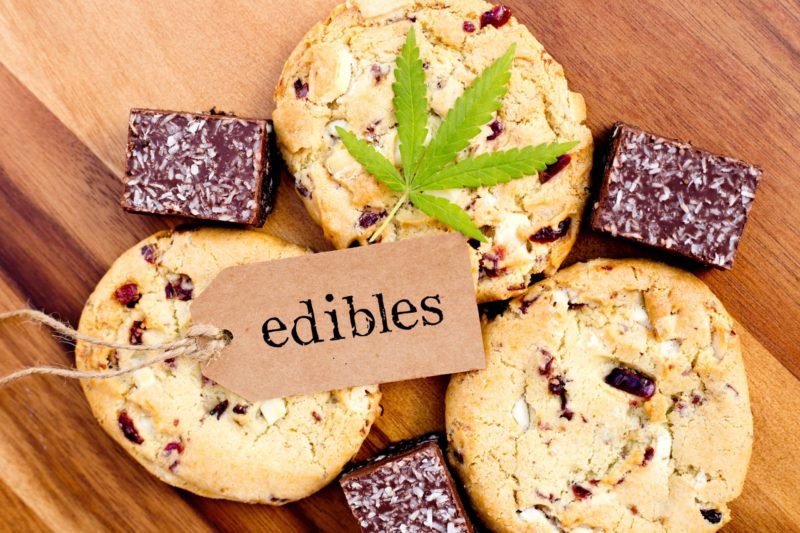
Consuming edibles is technically not a way to smoke weed, but it might be a helpful alternative for marijuana users looking to negate any of the respiratory risks associated with smoking or vaping. However, the effects of edibles are quite different from smoking. THC in edibles enters the body through the mouth membrane and the liver, which metabolize differently than the lungs. Edible consumption typically leads to a delayed onset of effects, which tend to be more intense and prolonged than those resulting from inhalation. It’s difficult to gauge amount as well, which introduces a further risk. Edible consumption can result in marijuana overdose, or greening out, and is more likely to result in an emergency room visit than smoking, according to a 2019 observational study.
According to mailorder-marijuana.org, the dispensary wants its customers to remember that it takes time for the munchies to come into effect. If you get premium edibles, the effects will be so much stronger in just a couple of hours due to its better potency.
5. Quality Is Key
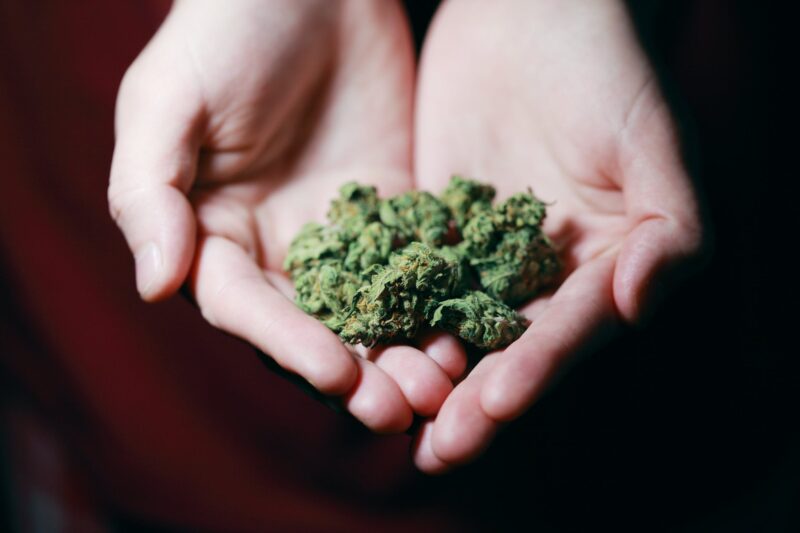
As it is with any food or medicinal product, knowing the source of your marijuana can help you reduce potential health risks. An organic bud is less likely to contain harmful chemicals that could sneak their way into your stash. Buying from a trusted grower reduces the number of hands the plant must pass through, reducing the risk of contamination. Also, the better your weed is, the less you will need to smoke! Smoking stronger weed means consuming less for the same effects, and a high-quality bud will have a higher active compound to irritant ratio. Quality versus quantity is likely to maximize the benefits of smoking while helping to reduce much of the risk.
6. Cultivate Better Smoking Habits

Lastly, while reducing the amount you smoke is one good way to protect your health, developing healthier smoking practices can also help keep your lungs happy. While it’s a no-brainer that mixing tobacco with weed is a big no-no, health-wise, plenty of other common smoking practices present increased risks.
Many weed smokers will inhale large amounts of smoke and hold the smoke in their lungs, even to the point of coughing. It’s largely a myth that coughing increases the potency of weed, but the practice of inhaling this way certainly does endanger your lungs. Instead, when smoking, first let the smoke enter your mouth. Then, inhale from the diaphragm to allow the smoke to enter your lungs. You should not hold the smoke in your lungs for more than a couple seconds before exhaling.
Conclusion
Researchers are still uncovering the benefits and risks involved in regular cannabis use, as well as the impact of different modes of consumption. However, there are still a number of ways you can protect yourself from potentially adverse effects of weed consumption. Whether you opt for a filter, a vaporizer, healthier smoking practices or a mix thereof, these are excellent ways to cultivate healthy habits and a healthier high!

